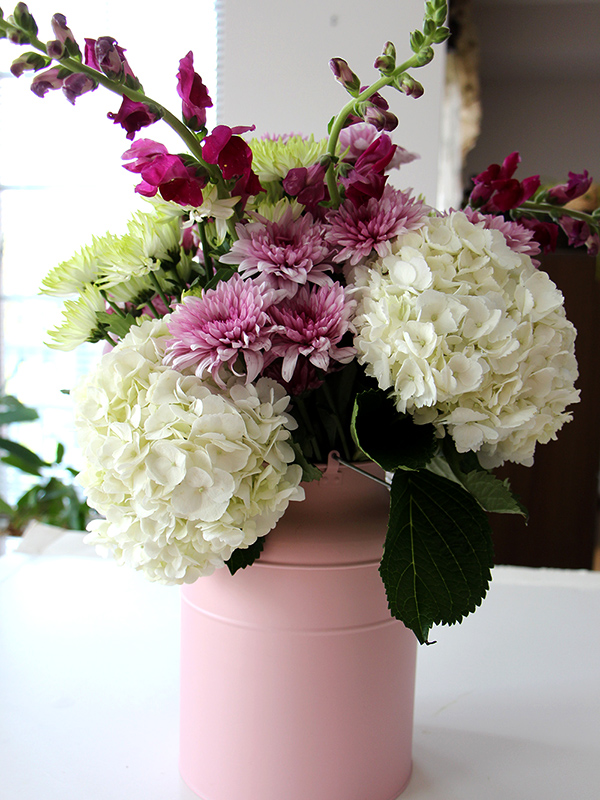Mindfulness has become a very popular word: there are programs, books, retreats and podcasts all in the name of helping us understand why it’s important to be “mindful” in our daily lives. Sure, the process of being mindful coincides with meditation or other practices that encourage connecting different parallels of the self together. But, what exactly is being mindful and how can the average person use these methods to get to this place? Then another really interesting topic are the Zen symbols and their meanings so have a look into that if that is of interest.
Psychology Today notes that mindfulness is a “state of active, open attention on the present…Instead of letting your life pass you by, mindfulness means living in the moment and awakening to your current experience, rather than dwelling on the past or anticipating the future.”
So, being present, thinking about connecting the senses and learning how to pay attention to all this is important, but can we do it?
Of course, and it’s actually easier than you might think. Consider the multiple benefits, including reducing stress, boosting focus and relationship satisfaction, to name just a few, and it’s no wonder that everyone from Rupaul to Gwyneth Paltrow and Emma Watson are practicing some form of mindfulness.
Here are some small tips, tricks, activities, resources, etc. that can help make the transition into the mindful headspace as hassle-free as possible. It will take some time though, so slow down and take it in.
If you’re a fan of books and resources that provide insight as well as formulaic descriptions based on cognitive therapy, the classic Mind Over Mood book is an excellent starting point. There’s now also a second edition of the book in case you want the updated version. From worksheets to step-by-step strategies to tracking your thoughts and emotions, this is a very ‘think and do’ book that gives you a lot of information and guidance when trying to find the mindful balance.
Mystic Mamma is a popular website for those searching for guidance and support. The weekly guidance from Kaypacha Lescher if not only informative, but it’s light-hearted and fun, making the experience enjoyable. There’s even a ‘Inspired Mama’ section that provides readings and tidbits around being a mother, living as a mother and why the connection between mother and child is so special. There is a real grounding feel with the site and the countless videos and visuals keeps things fresh and engaging. “All You Need Is Less” is one of the many mottos to absorb.
Mindfulness can go hand-in-hand with meditation and understanding how the practice activates the mind, particularly with gray matter, is important. This video from ASAP Science gives a brief intro into this relationship and why it matters. They show how “working out your brain” can potentially add extra health benefits too.
There are plenty of apps out there that cater to meditation and employ practices designed to help you strengthen your cognitive abilities, but one in particular worth mentioning is Aura Premium. Apparently Aura is the “only [app] that uses machine learning to completely cater to you and your specific needs.” The app helps you find balance and the science-backed findings were researched and developed by therapists and teachers. And, the AI components can take feedback as you use it to help better equip you with living in zen. It’s also great for first-timers too, and the time selection varies from three to 10-minute sessions. Aura was Apple’s #1 New Apps We Love this year and has been praised by the likes of Forbes, TeenVogue and TechCrunch.
Meanwhile, music can play a big part in the mindful and meditative experience.
First, figure out what music connects you, helps to de-stress you, or all-around makes your shoulders drop in relaxation when you listen. Perhaps it’s classical or maybe you have an Enya record lying around, whatever it is, make it about your preference and not what anyone says “will relax you.”
Now that you’ve selected your own tunes, it’s about listening, absorbing and reflecting on the attachment felt with the music. It’s important to hear the music while also concentrating on your senses and motions, from your eyes to your toes. Think about the music moving through each body part and as you are transitioning through, breathing and exhaling at every step. Take your time. You want to feel the vibrations while also letting the exercise help guide you to reflection. Simply listening is a skill in itself, one that you can really employ here.
In addition to music, one of the key components to reaching a meditative and mindful state is breathing. This breathing routine is quite helpful, and combines interval breathing with Nadi Shodhana and guided breaths. This concentration and dedication to breathing will help in the self-actualization process.
Remember you can do these exercises throughout the day: in the shower, in a parked car, sitting at the subway, during lunchtime, at the gym, while waiting in line at Wal-mart (may be pushing it, but worth a try!).
Following suit with mindfulness, yet focusing on motivation and the neuroscience behind it, was recently discussed in an article from Mashable. The article outlines how setting achievable goals, training your brain, saying “I feel” rather than “I am” are all methods to think about as well as the four behavioural drivers: drive to acquire, drive to defend, drive to bond and drive to learn, are all key when invigorating motivation.
Noticing how much mindfulness can play a part in your day and tapping into skills and resources should not be neglected in the seeking process.
Learning to actually turn off is certainly the hardest part.
In the meantime, check out “All it Takes is 10 Mindful Minutes,” a Ted Talk given by Andy Puddicombe, a former Buddhist monk and the founder of meditation app Headspace. Its garnered more than 8 million views since it was first recorded in 2012, and it’s all about the benefits of doing nothing (you read that right) for 10 minutes a day. Because we all need to hit the reset button every once in a while.












